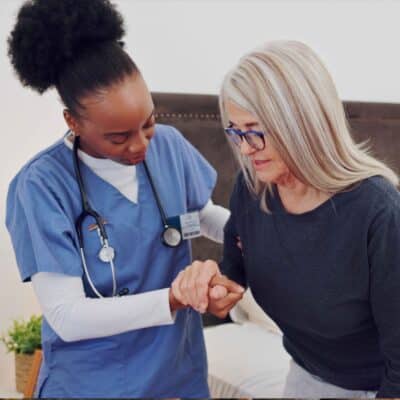Introduction
In a world where emergency situations can occur at any moment, being furnished with the skills and expertise to react successfully is critical. Whether it's a minor injury or a dangerous scenario, comprehending first aid can make all the difference. This thorough overview, "Grasping Emergency Situation Feedback: The Ultimate First Aid Course Guide," intends to supply insights into various aspects of first aid training, consisting of CPR strategies, mental wellness first aid, and the relevance of acquiring a first aid certificate.
So, are you ready to dive into this necessary knowledge? Allow's explore the world of emergency feedback and find just how to end up being efficient in first aid.
Understanding First Aid: What Is It?
First aid describes the instant care provided to someone experiencing a medical emergency. This might be anything from carrying out CPR (cardiopulmonary resuscitation) to treating minor cuts and bruises. The goal of first aid is not just to support the individual's problem until expert clinical help shows up yet likewise to prevent further harm.
The Importance of First Aid Training
Why should everybody go through first aid training? Well, consider this: mishaps happen on a daily basis-- in the house, in public areas, and also at work environments. By understanding first aid skills, you equip on your own and those around you.
- Quick Reaction: Recognizing what to do in an emergency permits quicker responses. Confidence Structure: Educating boosts your confidence when faced with medical emergencies. Preventing Complications: Reliable first aid can protect against problems from worsening.
Types of First Aid Gushes Available
There are numerous kinds of programs readily available:

- Basic First Aid Training course: Covers fundamental abilities required for daily situations. Advanced First Aid Program: Supplies a lot more complex methods ideal for professionals. CPR and AED Training: Concentrate on cardiac emergency situations and defibrillator use. Mental Health First Aid Training course: Addresses mental crises.
DRSABCD: The Crucial Structure for Responding
One of one of the most identified frameworks for giving first aid is DRSABCD. Each letter stands for an essential step in reacting effectively.
D - Danger
Before helping anyone, examine your surroundings for any type of potential dangers that might likewise place you at risk.
R - Response
Check if the individual is receptive by carefully trembling their shoulders and asking if they're okay.
S - Send out for Help
If the person is unresponsive or calls for immediate aid, phone call emergency situation services immediately.
A - Airway
Ensure that the person's air passage is clear. If needed, place them appropriately or perform rescue breaths if trained to do so.
B - Breathing
Check if they are breathing usually. Otherwise, commence CPR immediately.
C - Circulation
Look for indications of flow such as motion or coughing. If absent, first aid cpr course proceed with CPR till assistance arrives.
D - Defibrillation
If readily available, make use of an AED (Automated External Defibrillator) as soon as possible if they stay less competent after CPR.

CPR: A Lifesaving Skill
CPR-- or Cardiopulmonary Resuscitation-- is among the most crucial abilities found out in any first aid training course. It's designed to maintain blood flow and oxygenation up until innovative medical care can be provided.
The Actions of CPR
Check responsiveness by touching on their shoulder. Call emergency situation solutions while examining breathing. Begin chest compressions at a price of 100-120 per minute. After every 30 compressions, provide 2 rescue breaths if trained. Continue until professional assistance arrives or you see signs of life.Common Myths Regarding CPR
Many misunderstandings surround CPR; here are some information:
- You can not harm someone through upper body compressions; it's much better than doing nothing. Rescue breaths aren't always needed; hands-only CPR can be efficient in certain situations.
Obtaining Your First Aid Certificate
Completing a licensed course not just equips you with essential skills yet likewise supplies official recognition of your competency in first aid practices.
How Long Does a First Aid Certification Last?
Typically, a first aid certification remains legitimate for 3 years; nonetheless, refresher courses might be recommended a lot more frequently based upon work environment plans or individual preference.
Where Can I Find First Aid Courses Near Me?
Finding a reputable course commonly involves browsing on-line platforms or going to neighborhood community centers providing training sessions tailored to your demands-- like "first aid training course near me" searches!
Mental Wellness First Aid: Addressing Mental Needs
While physical injuries commonly take priority during emergencies, mental wellness situations require equivalent interest. Mental health first aid concentrates on recognizing symptoms like stress and anxiety assaults or severe anxiety and understanding exactly how to react appropriately.
Overview of Mental Health First Aid Training
Courses cover numerous subjects:
- Understanding mental wellness issues Communication strategies Crisis treatment techniques
These abilities can notably boost workplace safety and security and individual communications by promoting supportive environments.
First Help Devices Essentials
Having appropriate tools boosts your capacity to react efficiently throughout emergency situations. Below's an overview:
|Tools|Purpose|| -------------------|-------------------------------------------|| Adhesive Bandages|For minor cuts and abrasions|| Antiseptic Wipes|To clean injuries prior to clothing|| Gauze Pads|For bigger wounds calling for absorption|| Non reusable Gloves|To shield both responder and individual|| Scissors|Useful for reducing garments or plasters|
Make sure that your regional regulations affect what equipment must be consisted of in work environment kits!

Manual Handling Techniques in First Aid
When handling injuries requiring person transport or movement assistance, hand-operated handling methods end up being important parts in minimizing more injury threats-- both your own and theirs!
Safe Raising Techniques
To lift safely:
Bend at your knees-- not your back. Keep your back straight while raising utilizing leg strength. Avoid twisting throughout lifts; reposition feet instead.These methods decrease injury threats for both -responders and patients alike!
FAQs concerning First Aid Certification
1. What does "CPR" stand for?
Cardiopulmonary Resuscitation is an emergency situation procedure performed when a person's heart stops defeating effectively or when they stop taking a breath entirely.
2. The length of time does it require to finish a conventional first aid course?
The majority of standard programs last between 8-- 12 hours topped a couple of days cpr first aid relying on course dimension and format (in-person/online).
3. Exist free online first-aid programs available?
Yes! Several companies provide complimentary resources online that cover fundamental concepts without accreditation choices affixed-- ideal for general understanding enhancement!
4. Can I integrate my CPR training with my regular first-aid certification?
Definitely! Several institutions offer packed plans that include both accreditations at reduced prices compared independently taken classes!
5. Exactly how frequently ought to I rejuvenate my certification?
It's a good idea every three years unless otherwise specified by occupational laws within certain markets where regular updates could confirm valuable due advancing practices!
6. Where do I locate respectable providers supplying these courses?
Internet Sites like Red Cross Australia function considerable listings allowing possible students accessibility info concerning local offerings based on place questions such as "first-aid training course Brisbane" or "first-aid training Sydney NSW".
Conclusion
Mastering emergency feedback through efficient training isn't simply vital-- it's important! With thorough knowledge gotten from courses covering subjects like DRSABCD concepts along with practical applications such as CPR methods incorporated along with psychological wellness techniques makes certain preparedness each time an incident develops!
Remember that education and learning does not finish upon receiving your certification; remaining upgraded using correspondence course maintains those lifesaving abilities sharp while making certain readiness versus whatever challenges come our method! So go on-- take fee today by registering into "Learning Emergency Situation Feedback: The Ultimate First Aid Program Guide"! Your future self will certainly thank you greatly when faced with unforeseen conditions requiring instant action!